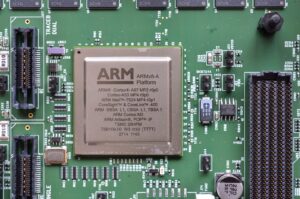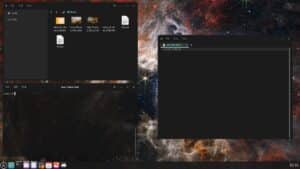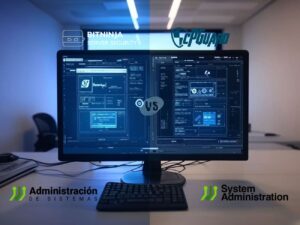In the Linux ecosystem, communication between processes and applications is crucial for ensuring the smooth operation of the operating system. One of the key mechanisms that facilitates this exchange is DBus, also known as “Desktop Bus.” This inter-process communication (IPC) system allows applications and system services to communicate in a standardized and efficient way. In this article, we explore the role of DBus in Linux, its components, architecture, and how it’s used in practice.
What is DBus in Linux?
DBus is a communication system that acts as an intermediary between processes. When an application needs to communicate with another application or system service, DBus handles the efficient transmission of messages. For instance, when you plug in a USB drive, the operating system uses DBus to notify all relevant applications of the new device, without requiring each application to check for it manually. This optimizes operations and facilitates seamless interaction between components.

DBus is at the core of many tasks within Linux desktop environments such as GNOME, KDE, and Xfce. However, its use is not limited to desktops; it’s also fundamental for managing system services and hardware events.
Components of DBus
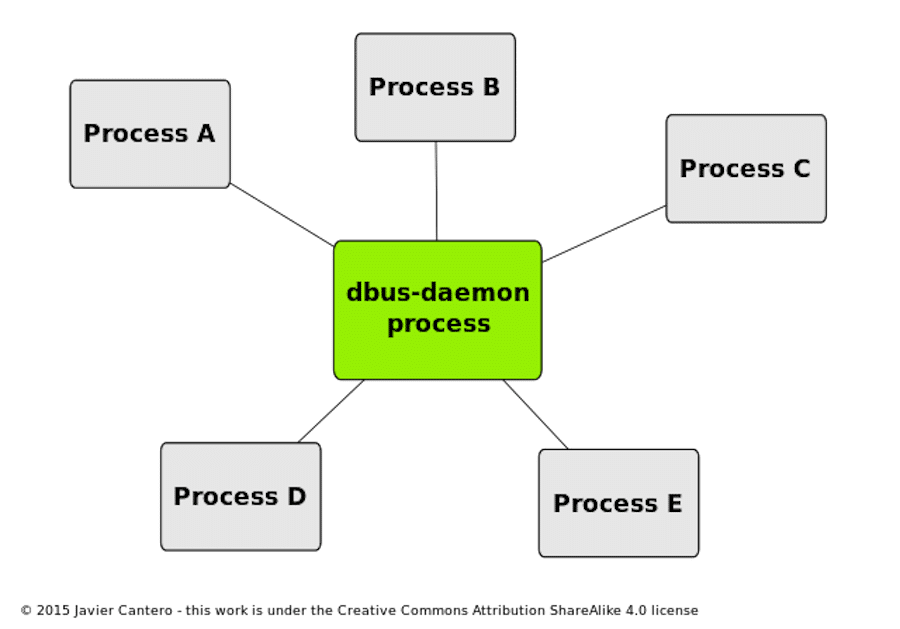
The DBus system is made up of several elements working together to ensure efficient communication between applications and services. Key components include:
- dbus-daemon: This background process acts as the “hub” of DBus. It routes messages between applications and services, keeping a registry of available services and ensuring secure, reliable message delivery.
- Applications: Programs that use DBus to communicate, such as file managers, media players, and other system components. These applications register with dbus-daemon to receive and send relevant messages.
- DBus Interfaces: These define the structure for communication between applications. They specify methods, signals, and properties for interaction. For example, a media player’s interface may include commands like “play” or “pause” and signals for notifying track changes.
- DBus Messages: Messages are the method by which applications and services communicate. They can be method calls (requests for actions), signals (event notifications), or error messages.
- System Bus: This operates at the system level, handling communication between system services such as hardware management or software update notifications.
- Session Bus: This operates within a user session, facilitating communication between desktop applications and user-specific services.
DBus Architecture
DBus follows a client-server architecture with a publish-subscribe pattern for message exchange. In this pattern, applications can send messages on topics without knowing who will receive them, and interested parties can subscribe to those messages.
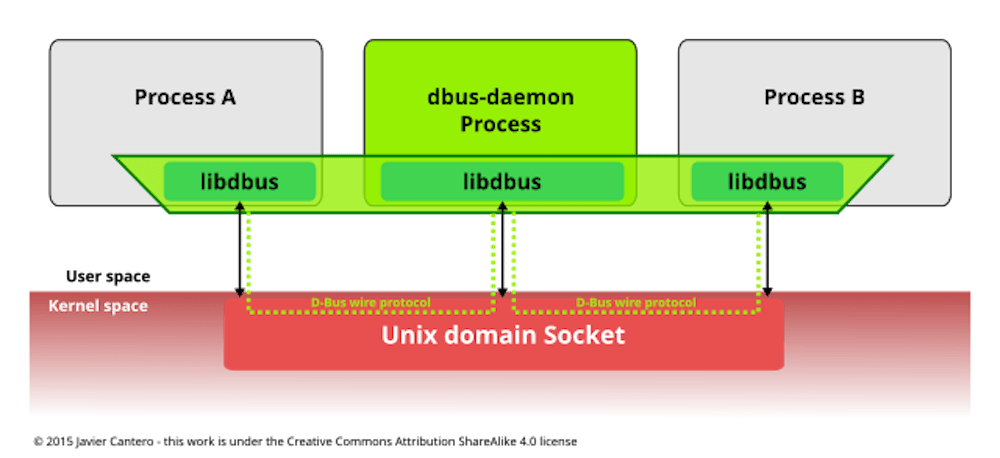
For instance, when Application A sends a message, the DBus library serializes the message and sends it to dbus-daemon, which then routes it to Application B, provided B is subscribed to receive such messages. This architecture allows efficient communication between processes.
Key features of DBus architecture include:
- Client-server model: The dbus-daemon acts as the central server, while applications (clients) send and receive messages through it.
- Object-oriented messaging: DBus messages contain methods, signals, and properties, making it intuitive for object-oriented programming.
- Efficiency: Messages are sent using network sockets, ensuring fast communication. DBus also uses message caching to enhance performance.
- Security: DBus provides authentication and authorization mechanisms to ensure that only authorized applications can access certain services.
DBus in Linux Desktop Environments
DBus plays a crucial role in enabling communication within Linux desktop environments like GNOME, KDE, and Xfce. Below are some examples of how DBus is used:
- GNOME: In GNOME, DBus allows applications to communicate with each other and with system services. For instance, a file manager can send a message to a media player to update the currently playing song. DBus is also essential for managing system services such as power settings and network configuration.
- KDE/Xfce: In these environments, DBus handles system events like USB connections and facilitates communication between applications for better integration.
DBus Limitations
Despite its many advantages, DBus has certain limitations that users and developers need to consider:
- Security Concerns: DBus relies on the system’s security policies for access control. It’s essential to configure proper permissions to mitigate security risks, as malicious applications with elevated privileges could exploit DBus.
- Compatibility Issues: Different versions of the DBus protocol may cause compatibility issues. Developers must ensure that their applications are compatible with the version of DBus they are using, and consider backward compatibility.
- Performance Overhead: DBus adds some overhead, particularly in applications that require high message throughput. Developers should be cautious when using DBus in performance-critical applications.
- Debugging: Debugging DBus can be challenging due to its distributed architecture. Tools and proper error handling are necessary to troubleshoot message delivery failures or misconfigured interfaces.
DBus is an essential tool for communication between applications and services in Linux. It enhances integration and efficiency in desktop environments and is critical for managing system services. While DBus has some limitations, it remains a fundamental component in the operation of Linux systems, ensuring smooth interaction between applications.
With a proper understanding of DBus, developers and system administrators can build robust, efficient Linux applications that communicate seamlessly and respond effectively to system events.





